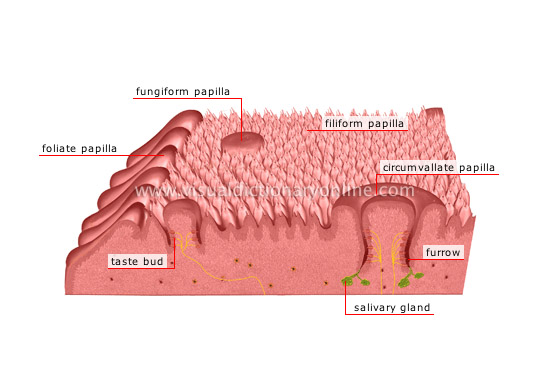taste receptors
The mucous membrane of the tongue is composed of small protuberances, lingual taste buds, distinguished by their particular sensitivity to one of the basic flavors: sweet, salty, sour, bitter.
furrow 
Saliva-filled depression delimiting the lingual taste buds.
salivary gland 
Each of the three pairs of saliva-secreting organs responsible for moistening food so that the taste buds can perceive its taste.
taste bud 
Organ of taste formed of sensory cells that, in contact with saliva, detect flavors and transmit them to the brain in the form of nerve impulses.
foliate papilla 
Taste bud located mainly on the posterior lateral edges of the tongue and having a taste function; it is most sensitive to sour flavors.
circumvallate papilla 
Each of the large taste buds (about 10) forming a lingual V at the back of the body of the tongue ensuring the taste function; they mostly perceive bitter flavors.








